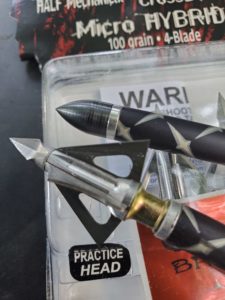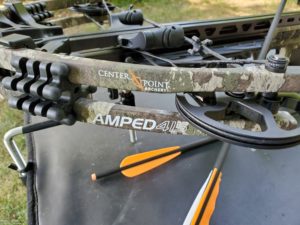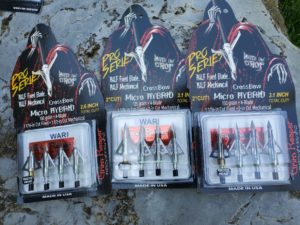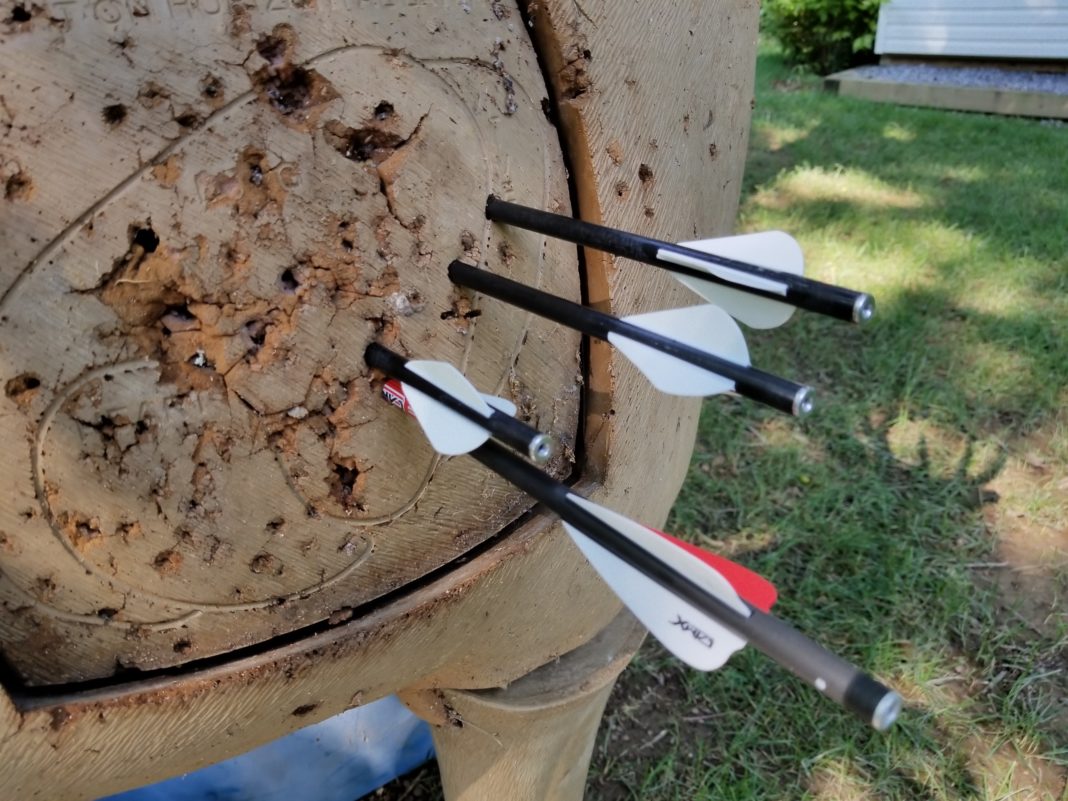Do your broadheads fly like a target point? Why is that important? If you hunt with a recurve, compound, or crossbow it’s critically important that you tune broadheads to fly like target points. How you practice is how you will hunt. When I first began bowhunting half a century ago, I often sighted my bow with broadheads. At first, this wasn’t difficult because I could re-sharpen that old Fred Bear blade. However, I soon realized that shooting broadheads for practice becomes expensive because they frequently damaged a previous shaft and wore the target excessively. The answer is tuning broadheads to fly like your practice arrows.

Variables to Consider
Today’s high-speed bows launch a tremendous force on arrows. Many crossbows let loose 200 pounds of draw weight to a “stationary stick” in an instant. If you’ve ever seen slow-motion photography of an arrow launched from a compound bow, you can visualize how it bends and flexes on its way to the target. This is the reason crossbow arrows are much thicker and have a heavier spine.
When tuning a broadhead, you are really tuning the system that launches it. If you screw the broadhead into the arrow insert and it spins like a top, that’s about all you can do to the broadhead. Compound users should concentrate on getting a bullet-hole tear on paper tests. In the old days, shooting a bare shaft was also an effective means of assuring that your arrow gets a clean launch. The more consistently you arrows fly with target points, the more likely they are to punch the same hole with a broadhead.
Cantankerous Crossbows

I’m currently testing a Centerpoint Amped 415 and had some very interesting experiences. The bow kit costs about $375 so you get a great bow, but not much else. The kit contained three target-tipped carbon arrows that shot very well. In fact, on my second bench test from 30 yards, I cracked a nock. Experimenting, I tested another brand of carbon shaft and got a group of nearly 4 inches, a terrible performance. Luckily, I had a batch of Easton FMJ with moon nocks and they shot extremely well, so precisely that I got a very expensive Robin Hood. There is not much tuning potential for a crossbow- You get what you get. However, you can experiment with various shaft materials and weights that may provide the broadhead accuracy you want.
Weight Can Matter
 Testing broadheads can become expensive and I was delighted to see that Grim Reaper offers a practice point in each package of their new hybrid heads. Additionally, they offer these heads with massive cuts in 100, 125, and 150-grain weights. Front of Center (FOC) weight is an important variable for arrow accuracy and you can inexpensively experiment with your set-up by buying target points in multiple weights. After a morning’s testing, I learned that my Centerpoint Amped likes the 150-grain Grim Reaper heads, also likes the 125 weight, but LOVED the 100-grain. At 40 yards, the 100-grain head scored a 10-ring and that’s about all of the distance I’ll need.
Testing broadheads can become expensive and I was delighted to see that Grim Reaper offers a practice point in each package of their new hybrid heads. Additionally, they offer these heads with massive cuts in 100, 125, and 150-grain weights. Front of Center (FOC) weight is an important variable for arrow accuracy and you can inexpensively experiment with your set-up by buying target points in multiple weights. After a morning’s testing, I learned that my Centerpoint Amped likes the 150-grain Grim Reaper heads, also likes the 125 weight, but LOVED the 100-grain. At 40 yards, the 100-grain head scored a 10-ring and that’s about all of the distance I’ll need.
Read All About It
If you’d like more information about broadheads and the bows that shoot them, check out my book, “Crossbow Hunting- A YouTube Quick Guide” by clicking here.



















![The Best Deer Camp Chili [VIDEO] Deer Chili Ingredients, Tomatoes, Chili Spices](/wp-content/uploads/2015/10/Deer-Chili-Deer-Camp-Recipe-218x150.jpg)
![How to Call Elk Early in the Season [VIDEO]](/wp-content/uploads/2016/08/byers003-218x150.jpg)




![Idiots Disturb Hunter: How Would You Have Handled It? [VIDEO]](/wp-content/uploads/2015/10/DSC00110-e1474487693878-100x70.jpg)
![Albino Buck Shocked to Shed His Antlers [VIDEO]](/wp-content/uploads/2015/10/AlbinoDeer-100x70.jpg)